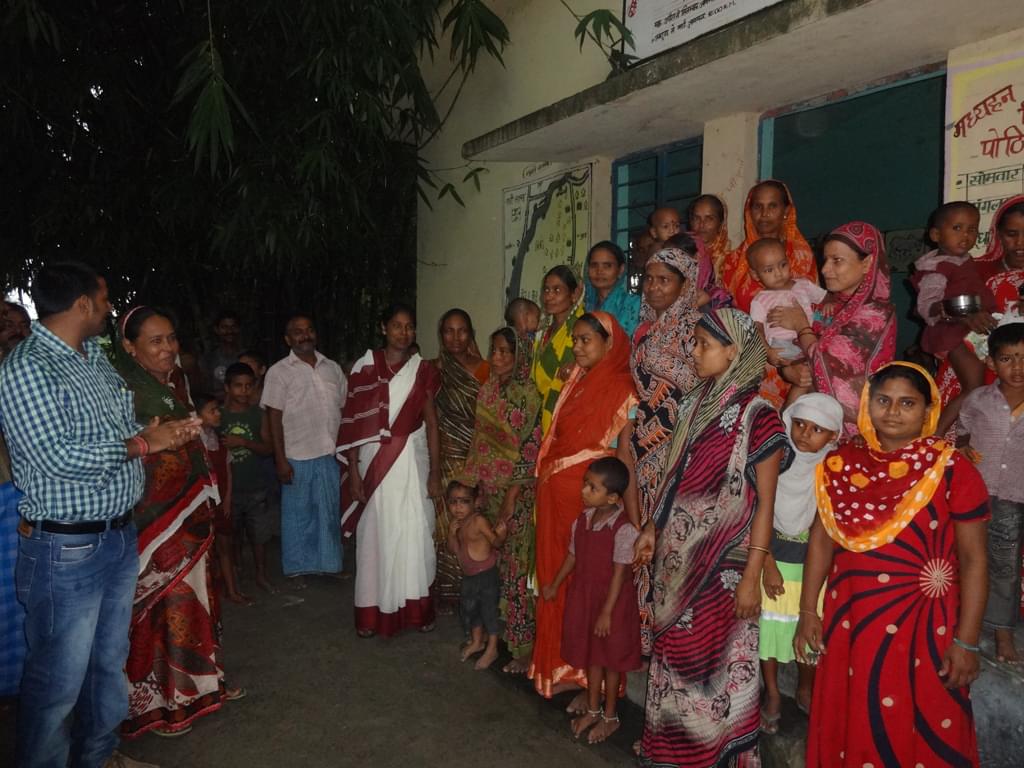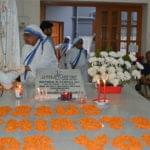Features
Muslim Women Fight JSY Graft in Kishanganj

At 16, Masooma Begum had her first child. That was in early 2012. Even today, the horror of her labour and delivery is clearly etched in her mind. A resident of Mahesmara village under Jahangirpur gram panchayat in one of Bihar’s most backward districts, Kishanganj, Masooma was forced to have a painful and complicated home delivery. “The nearest Public Health Center (PHC) is at Pothia, 25 kms away. There is an additional PHC at Kamalbari 3 kms away but it has never been functional. Transport is difficult to come by and hiring a vehicle to the PHC costs at least Rs 800-Rs 1000. My husband could not afford it. I had a nightmarish, unassisted home delivery and somehow managed to survive with my daughter”, says Masooma.
Now 18, Masooma is expecting her second child but the scenario is much brighter for her. “I have become aware that I am entitled to a free ambulance service to the PHC for my delivery. I also know that after the delivery, I will get a cash incentive of Rs 1400 under the Janani SurakshaYojana(JSY). I am getting my weight and pressure checked regularly at the village ICDS and I am no longer anaemic as I am taking the free iron pills regularly”, says a beaming Masooma.
This change in Masooma’s and hundreds of other women’s awareness regarding mother and child medical benefits has been wrought under the Department of International Development (DFID) supported Global Poverty Action Fund project – ‘Improving Maternal Health Status in Six States in India’ – launched by Oxfam India in October, 2012. The states included under the project are Bihar, Jharkhand, Chattisgarh, Odisha, Maharashtra and Rajasthan. In Bihar, the project has been launched in three districts – Kishanganj, Supaul and Sitamarhi, covering 70 villages.
Corruption in implementation of JSY was the first thing that came to light when Oxfam’s grassroots partner Bihar Voluntary Health Association (BVHA) started its intervention and advocacy in 22 villages in Kishanganj district. “During community group discussions in our village someone pointed out that a woman in the neighbouring village had collected two cash incentives in nine months under JSY. Then it came to light that several women in our village who had institutional deliveries had not been given any cash incentive. With the help of BVHA volunteers, we questioned our ASHA worker and followed it up at the panchayat level, only to discover that cash had been paid out against all the names registered under institutional deliveries”, says Noorbano Begum, 46, President of the Mahesmara Village Health, Sanitation and Nutrition Committee (VHSNC). Such committees, comprising 15-20 members, including 8-9 women, have been set up under the guidance of BVHA in all the 22 villages. Noorbano is also the member of the Village Health Committee (VHC) under the Jahangirpur gram panchayat structure.
During the tracking of the scam, it was discovered that money was issued in the name of all the pregnant women registered in Kishanganj but who delivered their babies in neighbouring West Bengal. In some cases, cash was withdrawn under names of women who were registered in West Bengal! “Islampur in West Bengal is just 10 kms away and has a big hospital. So, many couples who can afford the transport cost, go there for the delivery, even if they are registered with the local ANM. Similarly, many women married here have maternal homes in West Bengal and go there for deliveries. Money was withdrawn on the basis of registration, but never paid to these women”, says MustaqAlam, 48, member, Village Health Committee (VHC) under Jahangirpur panchayat, who is also a VHSNC member.
The community in Mahesmara took the lead to fight the corruption in the system. Its VHSNC members wrote to the Jahangirpur Panchayat Pradhan, the district Medical Officer in Charge (MOIC), the Civil Surgeon and finally the District Magistrate regarding the anomalies in the disbursement of JSY funds. Community tracking and monitoring finally revealed corruption to the tune of Rupees Seventy Two Lakh in Kishanganj district. “We realized our power when we could collect evidence regarding the matter and put up the same before the authorities who were compelled to suspend and arrested the MOIC and others involved in the racket. At the same time every woman in our village and nearby villages became aware of their entire entitlement from the government under JSY thanks to the movement”, says Noorbano, adding, “The awareness workshops, group discussions and advocacy done by BVHA were the eye-openers”.
There has been a marked improvement in access to the free ambulance service, getting the cash incentive and ensuring ICDS check-up for the pregnant women in Mahesmara in the last two years, however, the VHSNC members in this village are not resting on their laurels. “My name was registered by the Auxillary Nurse and Midwife (ANM) and my child was born at the Lion’s Club Medical College. They had issued me a birth certificate. But the PHC refused to pay me the cash incentive on the basis of that certificate and the gram panchayat is refusing to give me a birth card. The panchayat sevak is asking for Rs 600 for issuing the birth card. The VHSNC is now handling the matter for me”, says Afroza Begum, 24, Mahesmara village. “There are nine such cases in this village alone and the community is now creating pressure on panchayat officials for resolution”, points outMd Habib Alam, Afroza’s husband.
Kishanganj district has a low literacy rate of only 57.04, with female literacy at an abysmal 47.98. Among the minority community the female literacy rate is lower still and more than half the girls are married off below the age of 18. Infant mortality rate is 58 while the Maternal Mortality Ratio is as high as 368.
“Home deliveries often lead to death of the child. Even now, the free ambulance service is erratic as there is just one ambulance for the 22 villages under the panchayat. The parents don’t want to incur the transport costs to go to the PHC or hospital if the ambulance is not available”, says Nazli Begum, 35, ASHA worker, Mahesmara village, adding, ”however, over the last two years, institutional deliveries have gone up from 20% to about 60%”.
“We have succeeded in sensitizing the community in 22 villages regarding medical benefits and maternal health. The ICDS meals for infants, pregnant women and lactating mothers are being monitored at the community level as is the issuance of the mandatory iron pills. The pregnant women are following the diet chart and also getting their weight and blood pressure checked regularly. The mandatory protein urine test and blood tests, which are also part of the benefits, are not being done anywhere across the state. We are doing advocacy for implementation of these too soon”, says Meraj Danish, BVHA Thematic Coordinator, Kishanganj .
Another area where a huge difference is visible is in the utilization of untied funds allocated to every village at the panchayat level. The BVHA intervention has successfully created a bridge between the community and the ANM to ensure full and proper utilization of these funds. “We now liaison with the ANM Rebecca Tudu and use the funds for things like creating concrete platforms for tubewells, making drains etc.”, says Noorbano Begum, President Mahesmara VHSNC.
“The use of untied funds, given to the tune of Rs 10,000 per village, was also mired in corruption. With close community watch, now these funds are being utilized to improve sanitation with activities like construction of sewage tanks, making drains connecting hand pumps to the fields to use the waste water for irrigation, cleaning of drains etc.”, says Javed Akhtar, BVHA field animator.
The progress in improvement of maternal health is slow but steady. The need of the hour is to increase the number of ambulances in panchayats, ensure that all PHCs, additional PHCs and sub-centres are fully functional with 24×7 availability of doctor and ANM, implementation of the mandatory blood and protein urine test for pregnant women at the ICDS level and more focus on mother and child nutrition.
